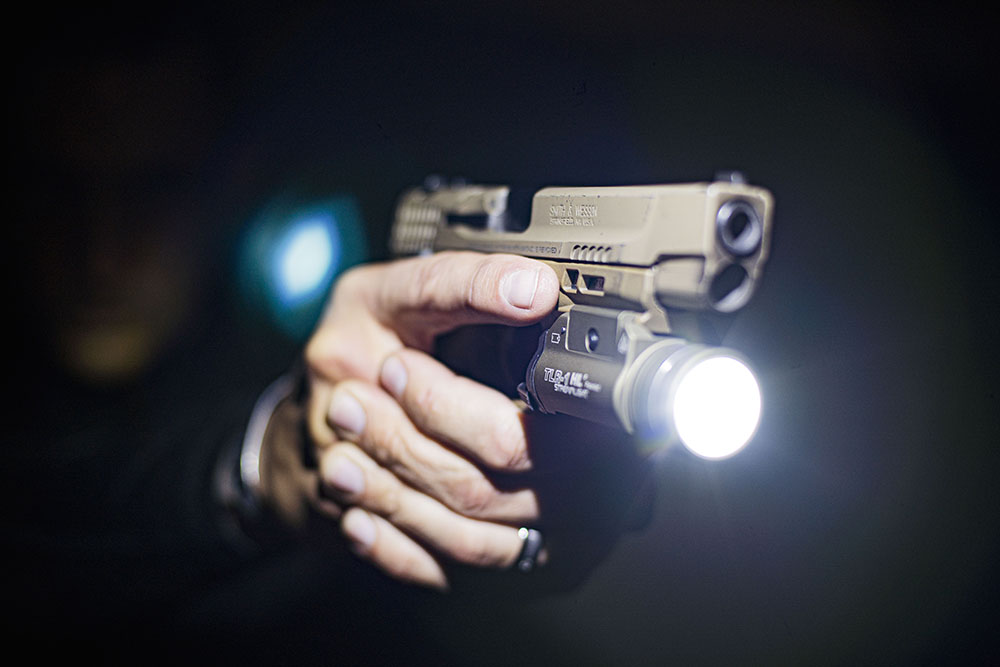In the realm of self-defense and tactical proficiency, mastering the use of firearms in low-light conditions is paramount. Whether it’s navigating dimly lit alleys, defending your home during a power outage, or facing threats in the cover of darkness, being proficient in low-light pistol training can be a life-saving skill. In this blog, we’ll explore the importance of low-light pistol training and provide insights into how to effectively train in these conditions.
Understanding the Importance of Low-Light Pistol Training
Low-light situations can drastically alter the dynamics of a confrontation. Reduced visibility not only hampers your ability to identify threats but also complicates your aim and decision-making process. Without proper training, fear and uncertainty can easily overwhelm even the most skilled shooters, leading to potentially fatal mistakes.
Challenges Faced
One of the primary challenges of low-light pistol training is overcoming the body’s natural physiological responses to stress and darkness. The adrenaline rush in a high-stakes situation can cause tunnel vision, making it difficult to perceive peripheral threats. Moreover, the eyes struggle to adjust to sudden changes in light levels, further impeding sight alignment and target acquisition.

Techniques for Effective Training:
1. Utilize Proper Equipment
Investing in quality low-light gear such as weapon-mounted lights or handheld flashlights is essential. These tools not only illuminate potential threats but also allow for better target identification and engagement.
2. Focus on Muscle Memory
In low-light scenarios, there’s little room for hesitation. Training drills should focus on developing muscle memory to instinctively draw, aim, and fire under adverse conditions. Repetition is key to ingraining these skills into your subconscious, allowing for quicker response times when it matters most.
3. Employ Light and Shadow
Learn to leverage light and shadow to your advantage. Use ambient light sources to silhouette potential threats while keeping yourself concealed. Practice moving in and out of shadows to confuse adversaries and maintain the element of surprise.
4. Practice Tactical Reloading
Reloading in low-light conditions can be a precarious task. Train to perform tactical reloads smoothly and efficiently, ensuring you always have a fully loaded firearm at your disposal.
5. Simulate Realistic Scenarios
Incorporate scenario-based training exercises that simulate real-world low-light encounters. This could include navigating obstacle courses, engaging multiple targets, or defending against surprise attacks in varying levels of darkness.
6. Train with Partners
Low-light pistol training often involves teamwork and coordination. Practice communicating with partners using verbal cues and hand signals to effectively navigate and neutralize threats in the dark.
Start Your Low-Light Pistol Training at Ozark Sportsman
At Ozark Sportsman, we’re proud to team up with the training team at Barritus Defense to bring you Introduction to Low-Light Pistol. We understand that training in low-light conditions can be intimidating and confusing. This course was designed to teach you the life-saving skills necessary to fight and prevail with your firearm in a defensive force encounter during low-light conditions.
Enhance Your Ability
Mastering the art of low-light pistol training is a journey that requires dedication, patience, and a commitment to continual improvement. By understanding the challenges posed by diminished visibility and implementing effective training techniques, individuals can enhance their ability to defend themselves and others in even the darkest of circumstances. Remember, in the shadows lies both danger and opportunity – it’s up to you to determine the outcome.
